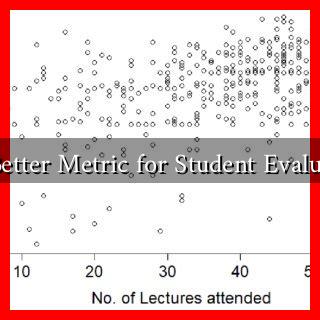-
Table of Contents
Why Are Objectives a Better Metric for Student Evaluation Than Attendance?
In the realm of education, the metrics used to evaluate student performance have long been a topic of debate. Traditionally, attendance has been a primary measure of student engagement and success. However, as educational paradigms shift towards more holistic approaches, objectives-based evaluations are gaining traction. This article explores why objectives are a more effective metric for student evaluation than mere attendance.
The Limitations of Attendance as a Metric
Attendance has been a longstanding metric in educational institutions, often used as a proxy for student engagement and commitment. However, it has several limitations:
- Does Not Reflect Learning: A student may attend every class but still fail to grasp the material. Attendance does not equate to understanding or mastery of content.
- External Factors: Various factors can affect attendance, such as health issues, family responsibilities, or transportation problems. These factors may not reflect a student’s commitment or ability.
- Encourages Compliance Over Engagement: Focusing on attendance can lead to a culture of compliance rather than genuine engagement with the material.
The Advantages of Objectives-Based Evaluation
Objectives-based evaluation focuses on specific learning outcomes and competencies that students are expected to achieve. This approach offers several advantages:
- Focus on Mastery: Objectives provide clear goals for students, allowing them to understand what is expected and work towards mastery of the subject matter.
- Encourages Active Learning: When students are evaluated based on their ability to meet specific objectives, they are more likely to engage actively with the material, fostering deeper learning.
- Personalized Learning: Objectives can be tailored to individual student needs, allowing for differentiated instruction that meets diverse learning styles and paces.
Case Studies and Examples
Several educational institutions have successfully implemented objectives-based evaluation systems, demonstrating their effectiveness:
- Project-Based Learning (PBL): Schools that utilize PBL often assess students based on the completion of specific projects that align with learning objectives. For instance, the High Tech High network in California emphasizes project-based assessments, resulting in higher student engagement and achievement.
- Competency-Based Education (CBE): Institutions like Western Governors University (WGU) focus on competencies rather than time spent in class. Students progress upon demonstrating mastery of objectives, leading to improved outcomes and satisfaction.
Statistics Supporting Objectives-Based Evaluation
Research supports the effectiveness of objectives-based evaluation. A study published in the Journal of Educational Psychology found that students who were assessed based on clear learning objectives performed significantly better than those evaluated solely on attendance. Additionally, a report from the Education Corner indicated that competency-based programs saw a 20% increase in graduation rates compared to traditional models.
Conclusion: A Shift Towards Meaningful Evaluation
In conclusion, while attendance has been a traditional metric for evaluating student performance, it falls short in accurately reflecting a student’s understanding and mastery of the material. Objectives-based evaluation offers a more meaningful approach, focusing on specific learning outcomes that encourage active engagement and personalized learning. As educational institutions continue to evolve, embracing objectives as a primary metric for student evaluation will not only enhance learning experiences but also better prepare students for future challenges.
By prioritizing objectives over attendance, educators can foster an environment that values mastery and engagement, ultimately leading to improved educational outcomes for all students.


